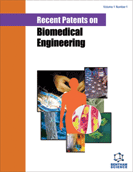Abstract
Minimally invasive surgery and less invasive medical devices mean less trauma for the patient, less likelihood of complications, shorter convalescence and significant cost savings. Surface modification is applicable whenever the surface of the device has to be bioactive or bioinert while the bulk material physical and chemical properties are opposite and have to remain unchanged, and when choice of the other bulk material is impossible (e.g. due to cost). Three groups include: commonly used inexpensive universal medical devices (e.g. urethral catheters, wound dressings), implantable devices (e.g. bone and soft-tissue replacements), and surgical devices (the largest product segment of the nowadays emerging minimally invasive surgery market e.g. guidewires, stents, catheters etc.). An additional fourth group includes devices for analytics: diagnostics and monitoring. The increasing knowledge and understanding of phenomena occurring at the biomaterial-tissue interface results in improvements in care that reduce negative consequences of the therapy in situ by increasing lubricity and biocompatibility, introducing antibacterial properties, and incorporating factors speeding up healing process. In this article, recent patents on the bioactive coatings for minimally invasive medical devices and the methods of medically applicable surface modification are discussed.
Keywords: Hydrogel, minimally invasive medical devices, less invasive medical devices, surface modification, biomaterials, coatings, grafting, catheter, wound dressing, stent
 15
15

